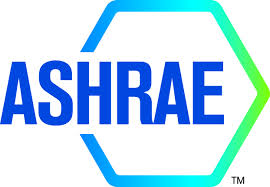Is your commercial building’s mechanical room in compliance with ASHRAE Standard 15-1994? If not, your building may not be up to code. But more than that, your mechanical room may not be safe. Your mechanical room houses refrigerants of varying degrees of toxicity and flammability. Specific measures must be taken to ensure these refrigerants are handled properly.
What is ASHRAE Standard 15-1994?
Standard 15-1994 of the American Society of Heating, Refrigeration and Air Conditioning Engineers (ASHRAE) is, in its simplest form, a safety code for HVAC refrigeration regulations. The standard is designed to help mitigate risks to mechanical room operators, building tenants, and the general public. Compliance with the standard can not only improve safety, but also minimize your legal liability.
Strategic Refrigerant Planning to Comply with ASHRAE Standard 15-1994
When reviewing your mechanical room for compliance with ASHRAE 15-1994 there are some primary areas to consider:
- Refrigerant Storage: “The total amount of refrigerant stored in a machinery room in all containers not provided with relief valves and piped in accordance with the standard should not exceed 330 lbs.,” according to Section 11.5 of ASHRAE 15-1994. If you have more than the allowable amount of refrigerant, it must be housed in separate mechanical rooms.
- Vents: A conventional purge loses up to 20 pounds of refrigerant for every pound of non-condensable air it removes from the system. Because of this, all purge systems must vent outside using mechanical ventilation. ASHRAE provides a formula for calculating ventilation capacity requirements.
- Relief Discharge: The discharge location of relief devices must be at least 20 feet away from any ventilation openings and at least 15 feet above ground level.
- Refrigerant Sensors: Your mechanical room must have sensors to detect refrigerant loss. They should trigger an alarm and mechanical ventilation, plus activate audible and visual alarms both inside and outside the mechanical room.
- Safety Rupture Disk Outlets: Thin carbon rupture disks that vent through the roof or side wall should be at least 15 feet above ground level.
- Rupture Lines: Chillers with different refrigerants should never share common headers.
- Floor Drains: If your chiller and occupied space share the same floor and share a drainage system, check to see if the drains in the occupied space are connected to those in the mechanical room.
- Doorways: Mechanical rooms must have tight-fitting doors that open and close freely and must be properly marked with a “Refrigerating Machinery Room — Authorized Personnel Only” sign, that also indicates that only trained personnel can enter when an alarm has been activated.
- Low Areas. Check to see if areas below floor level are holding chemical residues.
- Roof Drains. Check to see if roof drains collect refrigerant.
- Chiller Drain Valves. Check that the valves are secured and locked off.
- Exhaust Outlets. Check that the vent’s proximity to an air intake is at least 20 feet apart.
Contact Crockett Facilities Services, Inc. (CFSI) to Help You Comply With HVAC Refrigeration Regulations and Keep Your Class A Buildings Safe For Your Occupants
Crockett Facilities Services, Inc. (CFSI) is a mechanical contractor providing integrated facilities services, heating, ventilation, and cooling (HVAC) services, data center cooling services and energy management services. We know buildings inside and out. When we manage the maintenance and operations of your commercial facility, we constantly identify and implement measures that reduce energy usage and improve the operating efficiency of the mechanical and HVAC equipment.
Click Here to Request a Quote Today!
If you have any questions HVAC Refrigerant Regulations or, more specifically, ASHRAE Standard 15-1994, please contact Crockett Facilities Services Inc. (CFSI) by calling 202.600.2787 or email sales@crockett-facilities.com. CFSI provides 24/7 commercial mechanical and HVAC services throughout Washington D.C., Maryland, and Virginia. So give us a call today to find out how our MSCA GreenSTAR certified service technicians can improve your HVAC performance and energy efficiency.
You can also follow CFSI on Facebook, LinkedIn, Twitter, and Google+.
Sources:
Your Mechanical Room and ASHRAE 15-1994: 2001 Update, Carrier

